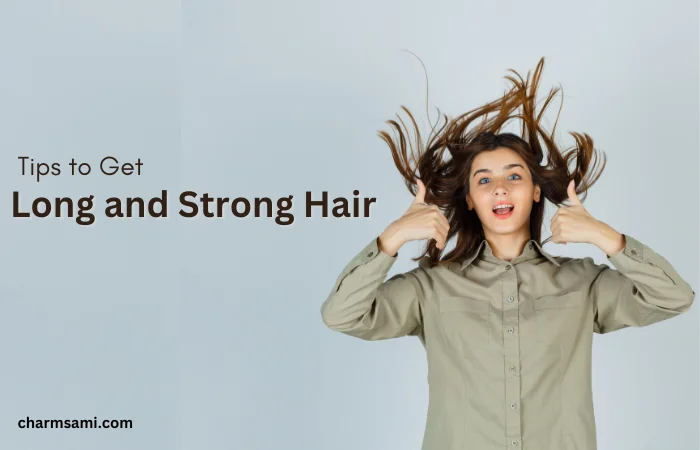
In a world where hair is often related with beauty and vitality, many individuals strive to get long and strong hair, healthy locks. However, with various factors like genetics, lifestyle, and environmental stressors, maintaining best hair health can be challenging.
The importance of avoiding hot water
To get long and strong hair, using hot water while washing your hair can strip it of its natural oils, leading to dryness and breakage. Opt for lukewarm or cool water instead to retain dampness and promote healthier hair growth. Additionally, consider rinsing your hair with cold water after training to seal the hair cuticles and enhance shine.
Gentle handling of wet hair
To get long and strong hair, wet hair is more susceptible to damage, so it’s essential to handle it with care. Avoid brushing or combing wet hair energetically, as this can cause breakage and split ends. Instead, use a wide-toothed comb or a gentle brush to detangle hair gently. Additionally, avoid rubbing your hair energetically with a towel to dry it, as this can lead to friction and breakage. Instead, gently squeeze out excess water and allow your hair to air dry or use a microfiber towel to blot it dry.
Limiting chemical treatments
While coloring your hair can enhance its arrival, frequent use of chemical dyes and treatments can weaken the hair shaft and lead to damage. To get long and strong hair, consider opting for natural or less harsh alternatives, such as henna or vegetable-based dyes, and always follow up with deep training treatments to nourish and repair the hair. Additionally, avoid overlapping color treatments and give your hair time to recover between sessions.
Understanding the impact of medications
Certain medications, such as those used for chemotherapy or hormone therapy, can affect hair growth and quality. Consult with your healthcare provider about the potential side effects of any medications you’re taking and explore alternative options if necessary. Additionally, consider joining hair-strengthening additions into your routine, such as biotin or collagen, under the guidance of a healthcare professional.
Regular trims for healthier hair
Trimming your hair regularly helps to get rid of split ends and prevent further breakage. Aim to schedule a trim every 6-8 weeks to maintain the health and vitality of your hair, even if you’re trying to grow it out. Moreover, communicate with your stylist about your hair goals and concerns to ensure they understand your needs and can provide tailored references for maintaining healthy hair.
Managing stress for better hair health
Chronic stress can have adverse effects on your overall health, including the condition of your hair. Practice stress-relieving techniques such as meditation, yoga, or deep breathing exercises to promote relaxation and support healthy hair growth. Moreover, prioritize self-care activities and establish healthy boundaries to reduce stress levels and support overall well-being.
The importance of conditioning
Using a conditioner after shampooing helps to replenish moisture and nutrients lost during the cleansing process. Choose a conditioner suitable for your hair type and apply it evenly from mid-length to the ends, avoiding the scalp to prevent weighing down the roots. Additionally, consider joining deep conditioning treatments into your routine once a week to provide extra nourishment and hydration to your hair.
Stimulating the scalp for growth
Massaging your scalp regularly can help to increase blood flow to the hair follicles, promoting hair growth and overall scalp health. Use your fingertips to massage the scalp in circular motions for a few minutes each day to reap the benefits. Additionally, consider using scalp oils or serums covering ingredients like red gum or rosemary oil to stimulate circulation and promote hair growth.
Protecting hair while sleeping
Cotton pillowcases can cause friction and lead to hair breakage while you sleep. Switch to a satin or silk pillowcase to reduce friction and help your hair retain moisture, preventing tangles and breakage. Additionally, consider tying your hair up in a loose bun or braid before bed to minimize friction and keep your hair protected while you sleep.
Exploring innovative hair growth techniques
Micro-needling, also known as derma rolling, involves using a small device with tiny needles to create micro-injuries on the scalp. To get long and strong hair, this stimulates the production of collagen and promotes hair growth, making it a promising option for those looking to boost hair growth naturally. However, it’s essential to consult with a dermatologist or trichology’s before attempting micro-needling to ensure it’s safe and appropriate for your hair and scalp condition.
Conclusion
To get long and strong hair is a goal many aspire to, and with the right care and attention, it’s possible to boost hair growth naturally. By following these tips and joining them into your hair care routine, you can support healthy hair growth and maintain beautiful locks that radiate vitality and confidence.
If you gained new insights from this article, explore our blog, Gimkit, for more enlightening content.